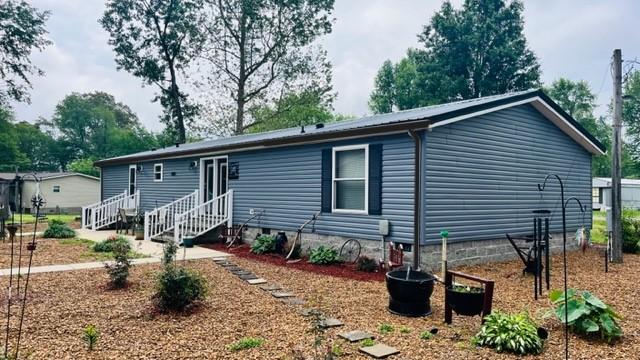
How to Choose the Right Gutter Material for Homes in Western Kentucky
When heavy spring showers or fall storms roll across Western Kentucky, your gutters are one of the first lines of defense keeping water away from your home’s foundation, siding, and roofline. But not all gutters are created equal. Homeowners around Paducah and McCracken County often ask: which gutter material is best for our region’s weather, seasonal temperature swings, and local conditions?
This guide will walk you through how to choose the right gutter material for your home in Western Kentucky. You’ll learn what options are available, what trade-offs to expect, how to decide for your specific roof and budget, and when to call in a pro. By the end, you’ll feel more confident choosing gutters that last, perform, and protect your home.
What Does the Right Gutter Material Mean?
The “right” gutter material for your home is the one that checks the boxes for your needs, climate, and budget. Specifically, it should:
Handle local climate stressors such as freeze-thaw cycles, heat, storms, and occasional hail.
Offer longevity and value, so you’re not replacing gutters too soon.
Match your roof structure and home design in weight, fastening, and appearance.
Balance cost, maintenance, and performance.
Work well with leaf protection or gutter guard systems if you plan to add them.
Common Gutter Materials and Their Trade-Offs
Here are the most common gutter materials homeowners in Western Kentucky consider, along with their advantages and disadvantages.
Aluminum
Aluminum is lightweight, resistant to corrosion, available in many colors, and moderately priced. It is a popular choice because it works for most homes. The downside is that it dents more easily and expands or contracts with temperature swings. Lifespan is usually 20 to 30 years with good maintenance.
Galvanized Steel
Steel is strong and resists impacts well. It’s a good option if you have lots of trees or expect heavy debris. The risk is rust over time if the protective coating wears off. Lifespan is about 20 to 25 years.
Copper
Copper is the premium option, offering incredible durability and a unique look that develops a natural patina over time. It is corrosion resistant and can last 50 years or more. However, it’s very expensive and requires specialized installation.
Vinyl or PVC
Vinyl gutters are low cost and easy to install, making them attractive for budget projects. They don’t need painting, but they can become brittle in cold weather, warp in high heat, and sag under heavy loads. Expect 10 to 20 years in mild conditions, but less in climates with big seasonal changes like Kentucky.
Stainless or Specialty Steel
Specialty steel gutters are very strong, impact resistant, and perform well in harsh conditions. The trade-off is higher cost and heavier weight, which demands stronger fasteners. Lifespan ranges from 25 to 40 years or more.
How to Decide: A Step-by-Step Guide
When choosing gutter materials for your Western Kentucky home, follow these steps:
Step 1: Assess Your Priorities
Decide what matters most:
Long lifespan or lower upfront budget
Low maintenance or premium appearance
Weather resistance against hail, snow, or storms
Compatibility with gutter guards and leaf protection
Step 2: Evaluate Your Roof and Home Structure
Think about your house:
Multi-story homes may require stronger fasteners for heavy gutters
Steeper roofs mean faster water runoff, which affects material choice
Tree coverage increases debris load, so durability becomes essential
Step 3: Compare Costs
Look at both material and installation costs. Vinyl is cheapest upfront but may need earlier replacement. Aluminum is moderately priced and offers good value. Copper is the most expensive but can last decades longer. Consider not just initial cost but lifetime cost over 20 to 50 years.
Step 4: Consider Leaf Guard Compatibility
Western Kentucky homes see plenty of falling leaves, especially in the fall. Stronger materials like aluminum, steel, or copper integrate better with leaf protection systems and handle heavy debris loads without sagging.
Step 5: Review Warranties
Strong warranties are a good sign of quality. For example, some companies offer 20-year material guarantees and workmanship coverage, which help ensure your investment lasts.
Step 6: Get a Professional Quote
Even the best gutter material won’t perform without proper installation. A professional will check roof pitch, fascia condition, and gutter slope to recommend the right material and system for your home.
FAQs
What is the best gutter material for freeze-thaw climates?
Aluminum or coated steel are usually best for Western Kentucky because they resist corrosion and handle expansion and contraction. Copper also performs well but at a higher cost.
Do seamless gutters work better than sectional gutters?
Yes. Seamless gutters reduce leak points, improve water flow, and require less maintenance compared to sectional gutters.
Can copper gutters stain my home?
Copper can leave greenish streaks over time, especially on lighter surfaces. This can be minimized with proper design and installation techniques.
Is vinyl good enough for a small home?
Vinyl gutters can work for one-story homes in mild climates, but in Kentucky’s variable weather, they are more prone to warping and cracking.
How much more does premium metal cost?
Premium options like copper or specialty steel can cost 20 to 50 percent more upfront. However, their longer lifespan and reduced repair needs can save money in the long run.
Conclusion
Choosing the right gutter material for your Western Kentucky home comes down to balancing durability, maintenance, cost, and local weather conditions. For most homes in Paducah, seamless aluminum offers the best balance of value, performance, and longevity. For those who want the ultimate in durability and aesthetics, copper is the top choice.
If you’re considering new gutters, the best next step is to schedule an inspection and compare material options with a trusted local installer. That way, you’ll know you’re making the right investment to protect your home for years to come.